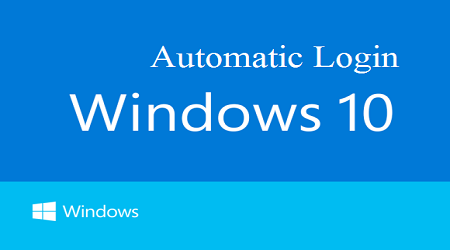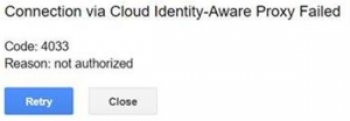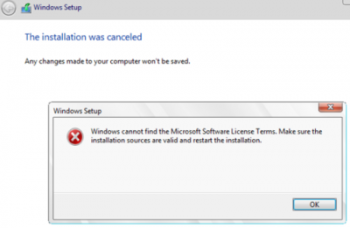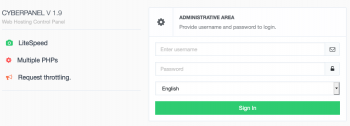Are you trying to automatically log in to Windows without password?
This guide will help you.
If we want to login to Windows 10, we have to enter a password for a local or Microsoft (online) account each time. Though this provides a certain level of device protection against access by third parties it causes inconvenience for home users as it increases the time to access the device’s desktop.
To get rid of this inconvenience we can use Automatic login. However, it reduces the security of the computer. Therefore, autologin should only be turned on if we are the only computer user and we are sure that no one else can get physical access to the device. Otherwise, it will risk the safety of personal data.
Here at Ibmi Media, as part of our Server Management Services, we regularly help our Customers to fix Windows related issues.
Methods to Automatically log in to Windows without Password:
Take the following steps to Automatically log in to Windows without Password.
1. Disable Windows 10 Login Password via the User Account Settings
The easiest way to disable password login on Windows 10 is to set the appropriate option in the User Account settings dialog box.
i. Firstly, in the Run prompt, enter the following command:
netplwizor
control userpasswordii. Then from the list of local user accounts, uncheck the option “User must enter a username and password to use this computer” and save changes (OK).
iii. After that, enter the user account and password (twice) that we need to use for automatic login and click “OK”.
iv. Finally, restart the computer.
2. How to Turn On Automatic Logon in Windows via the Registry
Another method to automatically log in to Windows without password is to turn on Automatic login via the registry.
This method of autologin is less secure as the registry will store the password as plain text and can be viewed by any local user.
Following are the steps to turn on automatic login via registry:
i. Firstly, type regedit in the Run prompt.
ii. Then go to the registry key HKEY_LOCAL_MACHINE\Software\Microsoft\Windows NT\CurrentVersion\Winlogon
iii. And change the value of the registry parameter AutoAdminLogon from 0 to 1
iv. After that, create a new string parameter DefaultDomainName, specify the domain name or a local computer name as its value.
v. Then close the Registry Editor and restart the computer.
To enable autologin through the registry, we can use the following commands (replace root and P@ssword with username and password, WORKGROUP should be replaced with the name of AD domain if the domain account used):
reg add “HKLM\SOFTWARE\Microsoft\Windows NT\CurrentVersion\Winlogon” /v AutoAdminLogon /t REG_SZ /d 1 /f
reg add “HKLM\SOFTWARE\Microsoft\Windows NT\CurrentVersion\Winlogon” /v DefaultUserName /t REG_SZ /d root /f
reg add “HKLM\SOFTWARE\Microsoft\Windows NT\CurrentVersion\Winlogon” /v DefaultPassword /t REG_SZ /d P@ssword /f
reg add “HKLM\SOFTWARE\Microsoft\Windows NT\CurrentVersion\Winlogon” /v ForceAutoLogon /t REG_SZ /d 1 /f
reg add “HKLM\SOFTWARE\Microsoft\Windows NT\CurrentVersion\Winlogon” /v DefaultDomainName /t REG_SZ /d WORKGROUP /f
reg add “HKLM\SOFTWARE\Microsoft\Windows NT\CurrentVersion\Winlogon” /v IgnoreShiftOvveride /t REG_SZ /d 1 /f
reg add “HKLM\SOFTWARE\Microsoft\Windows NT\CurrentVersion\Winlogon” /v AutoLogonCount /t REG_DWORD /d 1 /fAlternatively, we can use a PowerShell script to save the user’s login information to the registry:
$Username =’Ibmimedia’
$Pass = ‘Ibmimedia$uperP@ss’
$RegistryPath = ‘HKLM:\SOFTWARE\Microsoft\Windows NT\CurrentVersion\Winlogon’
Set-ItemProperty $RegistryPath ‘AutoAdminLogon’ -Value “1” -Type String
Set-ItemProperty $RegistryPath ‘DefaultUsername’ -Value $Username -type String
Set-ItemProperty $RegistryPath ‘DefaultPassword’ -Value $Pass -type String
Restart-Computer3. Disable Password Prompt after Sleep/Hibernation in Windows 10
Using GPO, we can turn off the password request when the computer wakes up from sleep or hibernation.
We can do this using the following steps:
i. First, run the gpedit.msc console.
ii. Then go to the policy section Computer Configuration -> Administrative Templates -> System -> Power Management -> Sleep Settings.
iii. After that, disable the GPO parameters “Require a password when a computer wakes (on battery)” and “Require a password when a computer wakes on battery (plugged in)”.
iv. Enable Secure Automatic Logon without a Password Using AutoLogon Tool
For a more secure automatic logon to Windows 10, we can use the free AutoLogon for Windows tool.
We can do this using the following steps:
a. First we have to download and run Autologon.exe (or autologon64.exe) as an administrator.
b. Then accept the terms of the license agreement.
c. Specify the user account, domain, and user password under which we want to perform autologin and press the Enable button:
Autologon successfully configured.
The autologon password is encrypted.
d. A window will appear in which it is indicated that the autologon is enabled.
We can set user credentials to automatically log on to Windows using the Autologon command-line options. To configure Windows autologin for a user, we can use the following command:
autologon64.exe USER_NAME DOMAIN PASSWORD /accepteulaTo disable automatic logon to Windows 10 without a password, just click on the Disable button.
How to fix “Microsoft Removes User AutoLogin in Windows 10 20H1/20H2” ?
Starting with build Windows 10 2004 (20H1), Microsoft decided to remove the option to configure automatic login for local accounts in the User Control Panel.
If we are using a local Windows login account and not a Microsoft account (MSA), then the “User must enter a username and password to use this computer” option is not displayed.
1. To show the option used to disable password login on Windows 10 20H2, open the powershell.exe console and edit the registry:
New-ItemProperty -Path “HKLM:\SOFTWARE\Microsoft\Windows NT\CurrentVersion\PasswordLess\Device” -Name DevicePasswordLessBuildVersion -Value 0 -Type Dword –ForceThis registry key value disables the Windows 10 option “Require Windows Hello sign-in for Microsoft accounts” setting.
2. Finally, close and restart the netplwiz console and make sure the checkbox appears.
Thus, we can configure auto login without a password on the latest Windows 10 builds (20H1 and 20H2).
3. We cannot uncheck the option “User must enter a username and password to use this computer” on the computer joined to the Active Directory domain due to the default domain password policy.
Here, the easiest way to disable password requests on the login screen is through the registry as described above.
[Need Assistance in fixing Windows errors? We are happy to help you! ]
Conclusion
This article covers methods to automatically log in to Windows without password.
Here, you can disable password login on Windows 10 and boot the computer directly to the user’s desktop. In order to temporarily disable automatic logon in Windows and manually specify the user credentials under which you need to sign in, you must hold down the Shift key while Windows is booting.
CMD is the official and tricky way to bypass Windows 10 admin password. In this process, you will need a Windows Installation disk and If you don't have the same, then you can create a bootable USB drive consisting of Windows 10. Also, you need to disable UEFI secure boot option from the BIOS settings.
To Disable Windows 10 Login Password via the User Account Settings:
1. Press Win+R;
2. In the Run dialog box, enter netplwiz or control userpasswords2 command;
3. In the next window with the list of local user accounts, uncheck the option “User must enter a username and password to use this computer” and save changes (OK);
To Automatically log in to your Windows 10 PC:
1. Open the Run command box (Start > All apps > Windows System > Run or press Windows key + R).
2. A User Accounts window will open.
3. A new window labeled Automatically sign in will pop up.
4. Your computer will now bypass the log-in page when you turn on your PC, but it will not bypass the login page when you unlock your PC.
This article covers methods to automatically log in to Windows without password.
Here, you can disable password login on Windows 10 and boot the computer directly to the user’s desktop. In order to temporarily disable automatic logon in Windows and manually specify the user credentials under which you need to sign in, you must hold down the Shift key while Windows is booting.
CMD is the official and tricky way to bypass Windows 10 admin password. In this process, you will need a Windows Installation disk and If you don't have the same, then you can create a bootable USB drive consisting of Windows 10. Also, you need to disable UEFI secure boot option from the BIOS settings.
To Disable Windows 10 Login Password via the User Account Settings:
1. Press Win+R;
2. In the Run dialog box, enter netplwiz or control userpasswords2 command;
3. In the next window with the list of local user accounts, uncheck the option “User must enter a username and password to use this computer” and save changes (OK);
To Automatically log in to your Windows 10 PC:
1. Open the Run command box (Start > All apps > Windows System > Run or press Windows key + R).
2. A User Accounts window will open.
3. A new window labeled Automatically sign in will pop up.
4. Your computer will now bypass the log-in page when you turn on your PC, but it will not bypass the login page when you unlock your PC.














